The Institute for Behavior and Health, Inc. has released a report entitled, A Strategy to Assess the Consequences of Marijuana Legalization.
With the passage in several states of ballot and state legislative initiatives to legalize the production, sale and use of marijuana, there is a pressing need for a formal repository of information related to the public health, safety and other consequences, both of marijuana use and of marijuana legalization, as well as changes in public attitude about marijuana use and policies. This requires a sustained and repeated systematic annual collection, analysis and reporting of these data to the public through an annual report. Future public policy decisions will depend on this information.
This Strategy urges a Congressional mandate to designate and appropriate the necessary funds for the management and coordination of this work using data and research from new and currently existing federal sources. In addition to a federally mandated reporting system, the Strategy strongly recommends the creation of state-based reporting systems and urges private organizations and foundations to become involved.
For complete paper go to… A Strategy to Assess the Consequences of Marijuana Legalization
For more about the Institute for Behavior and Health visit www.ibhinc.org
\”By looking at the data of more than 27,000 adults, researchers found that the participants who did not have AUD but reported using cannabis during the first survey were 5.4 times more likely to have an AUD three years later….\”Our study indicates that cannabis use is associated with increased prevalence and incidence of substance use disorders,\” Carlos Blanco, from the National Institute on Drug Abuse…\”
For complete article go to Smoking Marijuana Gateway To Alcohol Addiction, Abuse Of Other Drugs
|
Synthetic Drugs: A “Viral” Outbreak; Sharon S. Kelley, MS, PhD
“The synthetic drug abuse crisis reflects a number of similarities to a viral pandemic. The disease has spread rapidly throughout multiple countries via the assistance of a global carrier (the internet), with the virus mutation (analogue production) occurring at a pace that makes it difficult for agencies to quickly identify and regulate. Therefore, as in any disease outbreak, it becomes imperative for healthcare providers, scientists and law enforcement agencies to foster a mutual relationship of information exchange…”
For complete article go to The Journal of Global Drug Policy & Practice! VOLUME 9, ISSUE 4 – Winter 2015 http://globaldrugpolicy.com/Issues/Vol%209%20Issue%204/Synthetic%20Drugs%20-%20A%20Viral%20Outbreak.pdf
BY JOEL WARNER @JOELMWARNER ON 01/19/16 AT 1:45 PMJake Browne, a cannabis reviewer for the Denver Post, samples a strain at the Medicinal Wellness Center in Denver.PHOTO: ZACHARY ARMSTRONG
On the evening of Thursday, Dec. 17, Kevin Sabet was working on what he believed would be a bombshell. Sabet, founder of the anti-marijuana legalization organization Smart Approaches to Marijuana (SAM), had received a tip from someone associated with the Obama administration:State marijuana-use estimates for 2013 and 2014, which had just been released by the federal Substance Abuse and Mental Health Services Administration (SAMHSA), found that Colorado, which launched the country’s first legalized marijuana program in 2014, now led the nation in monthly marijuana use among those 12 to 17 years old. The development was due in part to decreases in marijuana use in other states, although youth marijuana use in Colorado had also increased slightly. The District of Columbia, Oregon and Washington, all of which have also legalized marijuana, came in at fourth, fifth and sixth places in the rankings, respectively.
“What went through our heads was, ‘This is big news,’” says Sabet. “We felt this would absolutely reach a wide audience.” After all, the day before, the National Institutes of Health’s 2015Monitoring the Future survey, which found that nationwide teen marijuana use had fallen slightly overall, had received widespread coverage. Wouldn’t this report generate major headlines, too?
Sabet rushed out a press release. Then he waited for the onslaught of calls he expected from reporters. Instead, all he heard was crickets.
The lack of media response to the survey numbers leads to the question: After decades of critical reporting on marijuana issues, if they bothered to cover the subject at all, have the media as a whole moved too far in the opposite direction? Are reporters and editors now so high on the topic of cannabis that they’re going too soft on the subject?
A Google News analysis of how the media covered two youth marijuana-use surveys in December indicates SAM may have a reason to feel snubbed. Between Dec. 15 and Jan. 15, there were at least 156 news reports on the Monitoring the Future report, which many have interpreted as being supportive of the marijuana movement (as the Washington Post noted of its data, “The case for marijuana legalization just got stronger”). During the same period, Google News recorded just 17 stories on the SAMHSA report, which, according to Sabet, raises questions about legalization.
The SAMHSA figures weren’t necessarily less newsworthy. As drug-policy expert Keith Humphreys, a professor of psychiatry and behavioral sciences at the Stanford University School of Medicine, notes: “Any state considering whether or how to legalize marijuana needs to pay close attention to this new data on teenagers in Colorado and Washington. It could be nothing, but I don’t think it should be dismissed.”
For complete article … http://www.ibtimes.com/marijuana-has-become-media-darling-are-journalists-too-soft-pot-2268042
Heavy Cocaine use = Brain cannibalization!
“A cell is like a household that is constantly generating trash,” coauthor Prasun Guha, a postdoc in Snyder’s lab, said in a press release. “Autophagy is the housekeeper that takes out the trash–it’s usually a good thing. But cocaine makes the housekeeper throw away really important things, like mitochondria, which produce energy for the cell.” Guha and colleagues published their results this week (January 18) in PNAS.
The Legalization of Marijuana in Colorado: The Impact 2016
The Legalization of Marijuana in ColoradoThe ImpactYOUTH&Adult MarijuanaUse2016
With Marijuana Legalization There Is More Marijuana Use and More Addiction While the Illegal Market Continues to Thrive
With Marijuana Legalization There Is More Marijuana Use and More Addiction While the Illegal Market Continues to Thrive. It comes as no surprise that the prevalence of marijuana use has significantly increased over the last decade.1 With marijuana legal for recreational use in four states and the District of Columbia and for medical use in an additional 31 states, the public perception about marijuana has shifted, with more people reporting that they support legalization.2 However, there is little public awareness, and close to zero media attention to the near-doubling of past year marijuana use nationally among adults age 18 and older and the corresponding increase in problems related to its use.3 Because the addiction rates for marijuana have remained stable, with about one in three past year marijuana users experiencing a marijuana use disorder, the total number of Americans with marijuana use disorders also significantly increased.1
It is particularly disturbing that the public is unaware of the fact that of all Americans with substance use disorders due to drugs other than alcohol, nearly 60 percent are due to marijuana.4 That means that more Americans are addicted to marijuana than any other drug including heroin, cocaine, methamphetamine and the non-medical use of prescription drugs.
Stores in Colorado and Washington with flourishing commercialized marijuana sell innovative marijuana products offering users record-high levels of THC potency. Enticing forms of marijuana, including hash oil used in discreet vaporizer pens and edibles like cookies, candy and soda are attractive to users of all ages, particularly those underage. The legal marijuana producers are creatively and avidly embracing these new trends in marijuana product development, all of which encourage not only more users, but more intense marijuana use.
Despite the expansion of state legal marijuana markets, the illegal market for marijuana remains robust, leaving state regulators two uncomfortable choices: either a ban can be placed on the highest potency — and most enticing — marijuana products which will push the legal market back to products with more moderate levels of THC, or the current evolution to ever-more potent and more attractive products can be considered acceptable despite its considerable negative health and safety consequences. If tighter regulations are the chosen option, the illegal market will continue to exploit the desire of marijuana users to consume more potent and attractive products. If state governments let the market have its way, there will be no limit to the potency of legally marketed addicting marijuana products.
The illegal marijuana market thrives in competition with the legal market by offering products at considerably lower prices because it neither complies with regulations on growth and sale, nor pays taxes on sales or their profits. Unsurprisingly, much of the illegal marijuana in the states with legalized marijuana is diverted from the local legal marijuana supply. It is troubling that in response to the decline in demand for Mexican marijuana, Mexican cartels are increasing the production of heroin, a more lucrative drug.
When alcohol prohibition ended in 1933, bootlegged alcohol gradually and almost completely disappeared. Those who favor drug legalization are confident that the same will occur in the market for drugs; they argue that legalizing drugs will eliminate the illegal market with all its negative characteristics including violence and corruption. The initial experience with marijuana legalization shows that this is dangerous, wishful thinking. Why doesn’t legalization now work for marijuana as it did for alcohol 80 years ago? One obvious reason is that there is little similarity between the bootleg industry of alcohol production that existed during prohibition and contemporary drug trafficking organizations. Today’s illegal drug production and distribution system is deeply entrenched, highly sophisticated and powerfully globalized. Traffickers are resourceful and able to rapidly to adjust to changes in the market, including competing with legal drugs.
The legalization of marijuana or any other drug is making a bargain with the devil. All drugs of abuse, legal and illegal, including marijuana, produce intense brain reward that users value highly — so highly that they are willing to pay high prices and suffer serious negative consequences for their use. Marijuana users’ brains do not know the difference between legal and illegal marijuana, but as with other drugs, the brain prefers higher potency products. Drug suppliers, legal and illegal, are eager to provide the drugs that users prefer.
The challenge of drug policy today is to find better ways to reduce drug use by using strategies that are cost-effective and compatible with modern values. Legalization fails this test because it encourages drug use. Most of the costs of drug use are the result of the drug use itself and not from efforts to curb that use. It is hard to imagine a drug user who would be better off with having more drugs available at cheaper prices. Supply matters. More supply means more use. Drug legalization enhances drug supply and reduces social disapproval of drugs.Our nation must prepare itself for the serious negative consequences both to public health and safety from the growth of marijuana use fueled by both the legal and the illegal marijuana markets.
Robert L. DuPont, M.D.President, Institute for Behavior and Health, Inc.Former Director, National Institute on Drug Abuse (1973-1978)Former White House Drug Chief (1973-1977)Established in 1978, the Institute for Behavior and Health, Inc. (IBH) is a 501(c)3 non-profit organization working to reduce illegal drug use through the power of good ideas. IBH websites include: www.IBHinc.org, www.StopDruggedDriving.org, www.PreventTeenDrugUse.org, and www.PreventionNotPunishment.org.31
References:
1 Hasin, D. S., Saha, T. D., Kerridge, B. T., Goldstein, R. B., Chou, S. P., et al. (2015). Prevalence of marijuana use disorders in the United States between 2001-2002 and 2012-2013. JAMA Psychiatry. doi:10.1001/jamapsychiatry.2015.1858
2 PEW Research Center. (2015, April 14). 6 facts about marijuana. Washington, DC: Author. Retrieved from http://www.pewresearch.org/fact-tank/2015/04/14/6-facts-about-marijuana/
3 Rocky Mountain High Intensity Drug Trafficking Area. (2015). The Legalization of Marijuana in Colorado: The Impact. Denver, CO: Author. Available: http://www.rmhidta.org/html/2015%20FINAL%20LEGALIZATION%20OF%20MARIJUANA%20IN%20COLORADO%20THE%20IMPACT.pdf
4 Center for Behavioral Health Statistics and Quality. (2015). Behavioral health trends in the United States: Results from the 2014 National Survey on Drug Use and Health (HHS Publication No. SMA 15-4927, NSDUH Series H-50). Retrieved from http://www.samhsa.gov/data/sites/default/files/NSDUH-FRR1-2014/NSDUH-FRR1-2014.htm http://www.samhsa.gov/data/sites/default/files/NSDUH-FRR1-2014/NSDUH-FRR1-2014.htm#fig31
Lawmakers reject Big Marijuana’s agenda
Categories: Uncategorized

